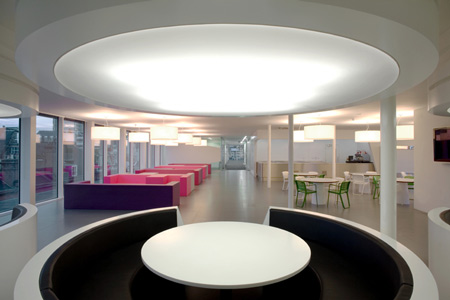Old buildings are lousy for business. They can look great; they can feel historical and even – if you’re that way inclined – a touch romantic; they can suggest power and majesty in a way that modern buildings struggle to match. But when it gets down to the day to day practicalities of 21st century life they can be, to put it bluntly, a liability. Basically they represent a form of technology that is past its sell-by date.
Old buildings are expensive to heat, light and maintain, they’re dark and draughty, they come with all sorts of formal restrictions about what you can and cannot do to them; they separate and divide people in ways that have nothing to do with modern working practices, and they are really not easy to modernise. Have you tried getting a cable, never mind a decent wifi signal, through a two foot concrete wall? 20th century architecture just isn’t compatible with 21st century urban life.
That’s why city redevelopment and regeneration schemes are happening right across the country in a wave of renewal that is as radical as it is rapid. The economic downturn may have slowed this urban revolution over the past couple of years, but the developers are once again gaining momentum. And they wouldn’t be doing that if there wasn’t a yawning market for what they’re offering.
Contemporary businesses – large and small – are increasingly moving out of the antiquated old architecture of the last two centuries to take up residence in thoroughly modern, purpose built developments that are designed for the way we live and work today. And that’s particularly true of what happens in our cities.
Here’s an example. Hammersmith in West London has recently been the subject of a huge public outcry over the regeneration of its town centre. After a prolonged public consultation, redevelopment plans were finally approved in 2012. Parts of the borough are to be demolished and a fit-for-purpose new infrastructure will be raised in its place. As a result, there will not only be an increased supply of state of the art office space in Hammersmith, but integrated residential developments will mean that the local population will benefit directly from the economic activity that goes with that. Meanwhile, the wider borough of Hammersmith is also enjoying extensive regeneration.
Cities have always been fluid in this way, ebbing and flowing through cycles of decay and regeneration. But what is happening right now is perhaps as dramatic and sustained a pattern of change as any in our history – Hammersmith just happens to be a particularly good example.
The impacts of digital technologies on the way we work, including the modernisation of building and design practices – buildings are all produced in 3-D digital models these days before so much as a brick is laid – means that everything is happening quicker, more cleanly and more efficiently than ever before. Old style buildings, designed for a different world, are simply putting an unnecessary brake on business.
Don’t get me wrong. I love good architecture. But there comes a point when you have to look to the bottom line. Historically, running costs have accounted for approximately 80% of the overall lifetime cost of any building. That’s too much. And that’s before you start to put a price on the practical hindrances that come with out of date real estate.
That’s why old buildings are lousy for business.




Leave a Reply